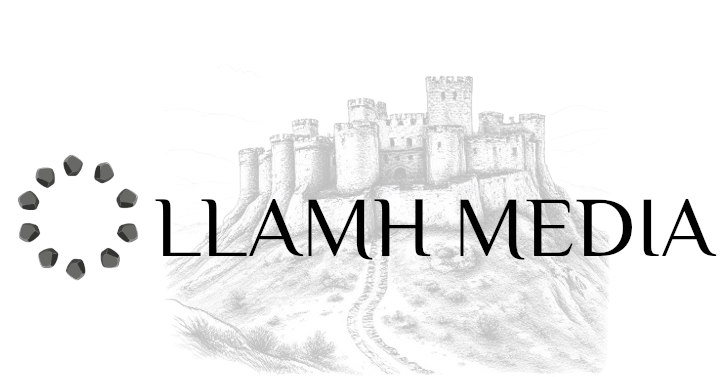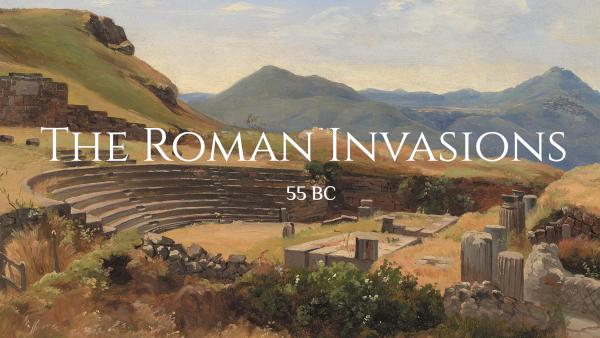Before the Roman invasions, Britain was more an ideological counterpoint than a geographical entity. “There is distant Britain, the furthest people of the world, set in an unknown sea, where even the signs of the zodiac are not recognisable.” Caesar documented that the Britons dye their bodies with woad. The woad produces a blue colour, further adding to the mystique surrounding the Island.
The native Britons fascinated the Romans. The apparent otherness observed on the Island also led to fear within the legions.
Pytheas referred to Prettanike or Brettaniai, a group of islands off the coast of North-Western Europe. In the 1st century BC, Diodorus Siculus referred to Pretannia, a rendering of the indigenous name for the Pretani people whom the Greeks believed to inhabit the British Isles.
Cassius Dio writes in Roman History, LXXVII
“There are two principal races of Britons, the Caledonians and the Maeatae, and the names of the others have been merged in these two. The Maeatae live next to the cross-wall which cuts the island in half, and the Caledonians are beyond them. Both tribes inhabit wild and waterless mountains and desolate and swampy plains, and possess neither walls, cities, nor tilled fields, but live on their flocks, wild game, and certain fruits. They dwell in tents, naked and unshod, possess their women in common, and in common rear all the offspring. Their form of rule is democratic for the most part, and they are very fond of plundering; consequently, they choose their boldest men as rulers. They can endure hunger and cold and any kind of hardship; for they plunge into the swamps and exist there for many days with only their heads above water, and in the forests, they support themselves upon bark and roots, and for all emergencies they prepare a certain kind of food, the eating of a small portion of which, the size of a bean, prevents them from feeling either hunger or thirst.
The First Roman Invasion 55BCE
Julius Caesar in 55BCE bridged the rhine for the first time, he then decided to cross the channel and venture further onto the mythical island of Britain. He claimed that during his conquest of Gaul, the Britons were supporting the inhabitants of Gaul against him.
Caesar sent one of his generals to scout the Island. After he gathered two legions and on midnight of August 23rd Julius Caesar finally set sail.
Caesar at first, attempted to disembark at Dubris, today known as Dover. However, the Britons were awaiting the Romans upon the cliffs. The Britons were awaiting the opportunity to attack the Romans. Caesar decided to sail 7 miles North East along the coast intending to land at a less hostile shore. The Britons anticipated this and tracked the ships and once again opposed the landing. The natives attacked the disembarking Roman soldiers in the shallow waters as they swam to shore. The troops initially reluctant, made their decision after their leader exclaimed;
“Leap, fellow soldiers, unless you wish to betray your eagle to the enemy. I, for my part, will perform my duty to the republic and to my general”.
The Romans proceeded onto the Island of Britain and set up camp. To the surprise of Caesar, a heavy storm culminated, damaging their boats. This stranded Caesar and the Legion until they could make repairs. The Britons saw this as an opportunity, to launch raids upon the Roman camp, hoping to delay their exit and starve them into submission during the harsh British winter. However, Caesar captured British hostages and repelled British attacks. After some time, Caesar would return to Gaul, without succeeding to mitigate the British threat, however he had sewed the seeds by establishing alliances with certain British kings, which would in turn make later whole-scale invasions more feasible.
The Second Roman Invasion
Preparations for a second invasion began in the winter of 55-54 for the summer of 54 BC. Determined not to repeat the mistakes of the previous invasion, Caesar gathered a much larger force. Caesar also decided that he would depart from Portus Itius. The departure point would be strategically located to ensure that supplies and food could be transported in future to the new settlements when required.
The Roman troops immediately marched inland 12 miles upon landing at Kent. While marching inland, they met British forces at a river crossing and quickly repelled them. The Britons fled to a hill fort close by, while Caesar made camp. The next morning Caesar intended to advance further, however once again, word had reached him that his ships had been damaged at shore due to a heavy storm. He then returned to the coast and had his men work to repair the damages.
After repairing the ships, Caesar and his forces once again began to move further inland. Once again, at the river Stour he met the British forces. A warlord from the north of the Thames named Cassivellaunus led the British forces . A stand off began. The Britons attacked the legions and the legions attacked the Britons. After many skirmishes, Cassivellaunus realised he would not be able to defeat Caesar. The Britons disbanded and resorted to using guerrilla tactics to launch small attacks on the legion’s advances.
Cassivellaunus then sent ambassadors to Caesar to negotiate a surrender, agreeing to give hostages and annual tribute to Caesar. Caesar wrote to Cicero on 26 September, confirming the result of the campaign, with hostages acquired but no booty taken, and that his army was to return to Gaul.
The Aftermath of the Roman Invasions
It is known that although Caesar made no complete conquests within Britain, he paved the way for Claudius to come after and facilitate a permanent conquest. In the words of Tacitus:
“It was, in fact, the deified Julius who first of all Romans entered Britain with an army: he overawed the natives by a successful battle and made himself master of the coast; but it may be said that he revealed, rather than bequeathed, Britain to Rome”.

